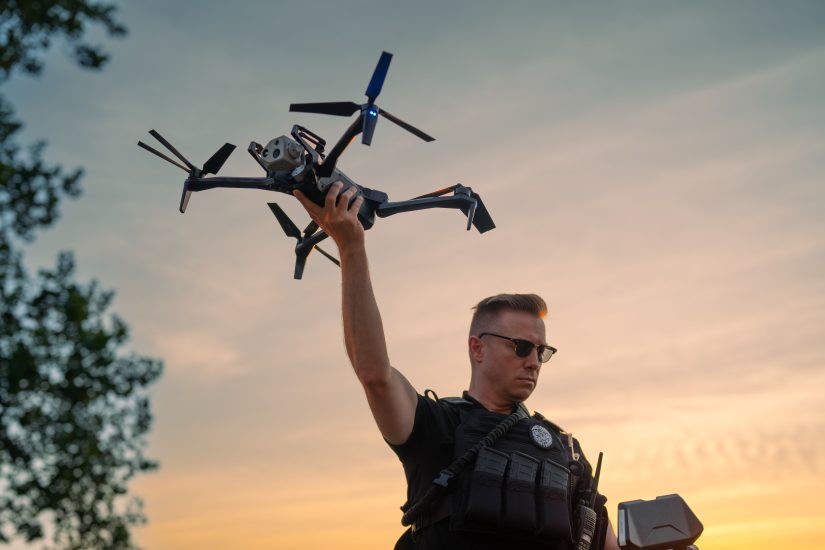The United States Transportation Security Administration (TSA) has used an agency-owned, small uncrewed aircraft system (sUAS) to test the threat of drones over San Francisco International Airport (SFO).
TSA’s Law Enforcement/Federal Air Marshal Service (LE/FAMS) UAS Assessments Unit, which led the effort, was established to oversee the agency’s role in protecting the US Transportation Systems Sector from nefarious drone use.
Assistant Supervisory Air Marshal in Charge Jason Goff said the SFO effort was TSA’s first opportunity to launch its Skydio X10 drone to assess the UAS climate at the airport.
“sUAS supports UAS assessments by providing photographic evidence of line-of-sight and possible attack trajectories from altitude,” explained Goff. “Assessments like this allow us to demonstrate the capabilities of sUAS by conducting elevated (or aerial) observations of airport operations. They also help us verify viable locations for a possible attack.”
When flying, a Skydio X10 weighs about 5 1/2 pounds, is 31.1 inches long, 25.6 inches wide and 5.7 inches high.
Acting Supervisory Air Marshal in Charge Ty Fletcher said TSA faces a range of growing challenges associated with the threat posed by UAS, citing the disruption at San Juan International Airport in January 2024 as an example. In December, a California man was arrested at SFO on suspicion of flying a drone and taking photos over a US Space Force Base on the Central Coast.
Fletcher said TSA partners with other federal, state, local, territorial and tribal agencies as well as the aviation industry on UAS response policies and procedures.
“Given that a UAS incident can develop very quickly with little warning, the best course of action is to locate the operator and end the disruption,” Fletcher noted. “To do that, it is critical to pre-identify likely UAS probable launch sites so airport stakeholders can notify law enforcement if no technical solutions are available.”
He said using uncrewed aircraft systems also helps create outreach opportunities for LE/FAMS and determines how communities respond to reporting drone use.
“During the SFO assessment, San Francisco Recreation and Parks employees informed us that UAS operations were not authorised in city parks,” added Fletcher. “These encounters affect the scoring of potential launch sites, as they demonstrate that people are aware of possible issues of drones operating near airports.”
Fletcher said operators of low-cost, highly accessible, off-the-shelf commercial drones may intentionally or unintentionally harm the transportation system, particularly airports.
“UAS also pose a potential threat to surface and other transportation systems,” shared Fletcher. “Surface transportation presents a particularly challenging environment to detect and mitigate UAS. The sprawling nature of railroad rights-of-way, highways, pipelines and the rail transport industry makes oversight challenging.”
Serge Potapov, executive director of the LE/FAMS Flight Programs Branch, said the Skydio X10s are US-made and cyber-hardened sUAS authorised for use through the DHS Blue UAS Program, which the US Department of Defense created to identify and approve drones for government use.
“Launching our inaugural sUAS mission, we are taking an important step toward revolutionising the tools available to protect the travelling public,” said Potapov, who added that the agency intends to expand the use of this technology across all of its field offices.
For more information
Image: Skydio




